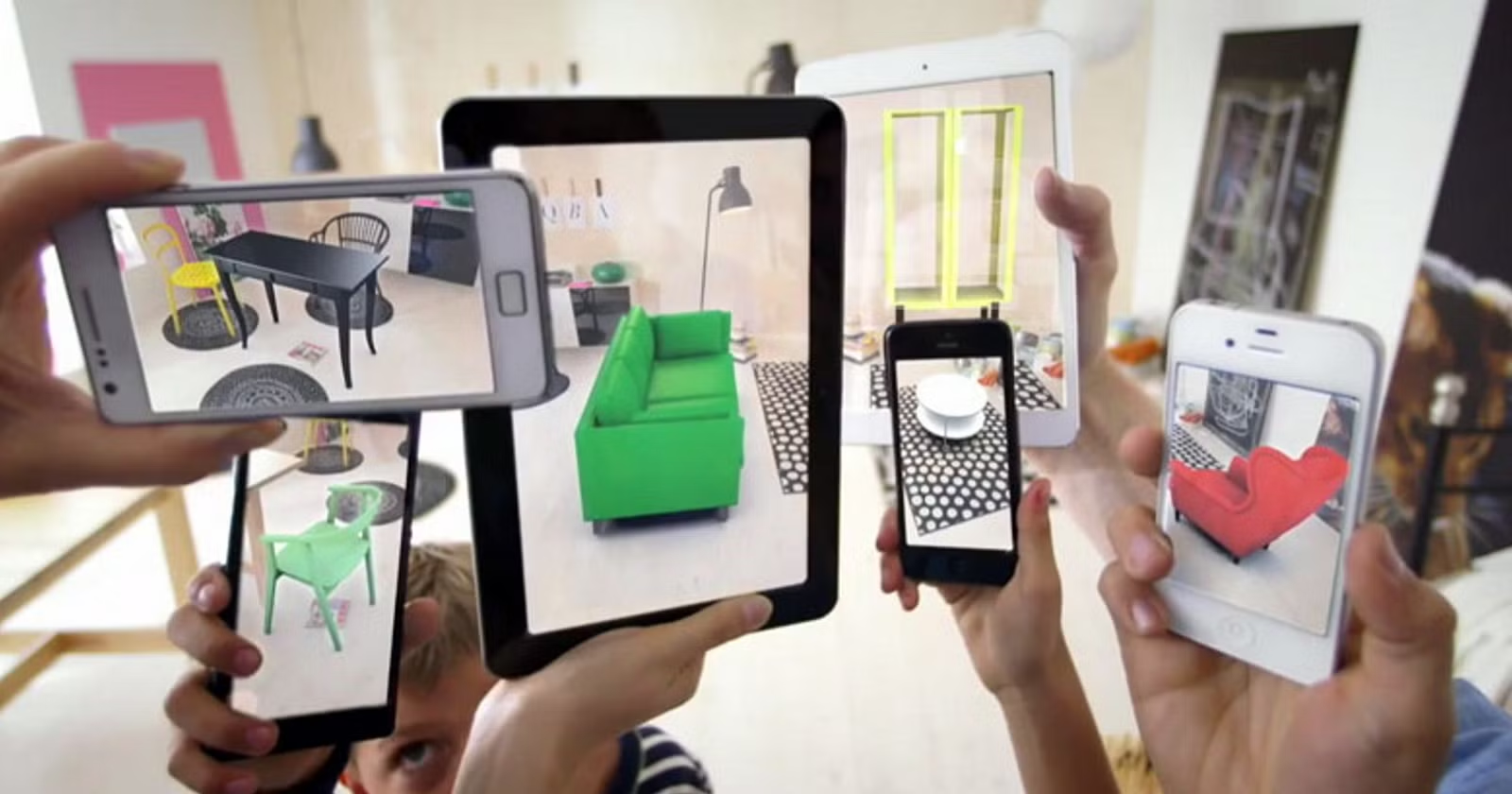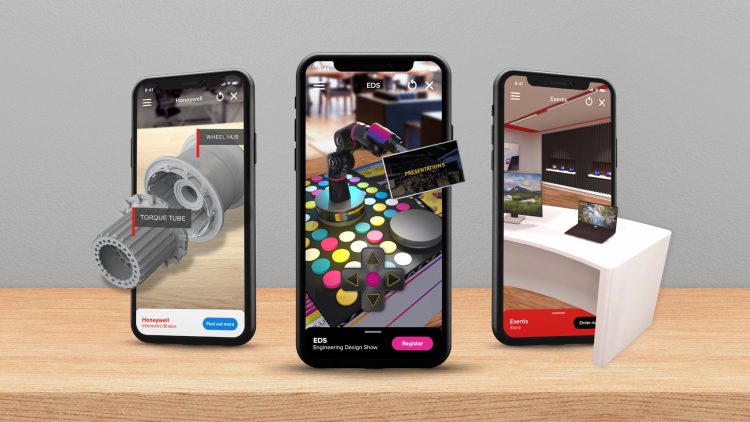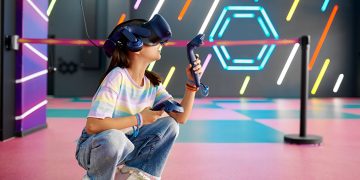Augmented reality (AR) is no longer confined to individual experiences or isolated applications. As AR technology matures, it promises to reshape society, economies, education, healthcare, and human interaction on a global scale. The integration of AR into daily life, work, and public spaces presents both opportunities and challenges, compelling humanity to rethink social structures, ethics, and our relationship with digital information.
AR in Urban Environments
Cities are becoming living interfaces through AR. Public infrastructure can be overlaid with information for navigation, safety, and engagement. Citizens equipped with AR glasses or lenses perceive traffic flow, construction zones, environmental data, or historical context of buildings in real-time.
Smart cities leverage AR to create interactive public spaces. Monuments, parks, and transit hubs provide immersive experiences: historical reenactments, live events, and educational overlays. AR transforms urban planning from static maps to dynamic, layered information, allowing citizens to interact with the city actively.
Moreover, AR can optimize logistics, emergency response, and public services. First responders access real-time AR overlays during disasters, guiding evacuation routes, locating hazards, or coordinating resources efficiently. Citizens benefit from enhanced safety, information transparency, and civic engagement.
Education and Workforce Transformation
AR is redefining how humans learn and work. Educational institutions adopt AR for immersive training, laboratories, and collaborative global classrooms. Students no longer just read or watch—they interact, manipulate, and experiment with real-time simulations.
In the workforce, AR enhances productivity and skill acquisition. Surgeons perform AR-guided operations; engineers visualize complex machinery; factory workers receive step-by-step augmented instructions for assembly. Remote collaboration is augmented with AR holograms, enabling teams to interact with shared virtual models across continents.
AR-driven training reduces errors, accelerates learning curves, and democratizes access to high-quality education and professional development. Workers and students develop spatial reasoning, problem-solving, and digital literacy skills, preparing society for increasingly complex technological landscapes.
Healthcare and Social Well-Being
AR is set to transform healthcare delivery, patient engagement, and mental health. Virtual overlays assist surgeons, therapists, and caregivers, while patients engage in personalized rehabilitation and cognitive exercises.
Beyond clinical settings, AR promotes preventive health and wellness. Citizens track vital signs, receive interactive guidance for nutrition and exercise, and access mental health interventions in immersive environments. Socially, AR fosters empathy by enabling perspective-taking experiences, interactive narratives, and simulations that encourage understanding of different populations’ experiences.
The potential for AR to bridge healthcare gaps in underserved areas is significant. Remote AR-assisted procedures, telemedicine overlays, and interactive health education empower communities with limited access to specialists or resources.
Ethics, Privacy, and Societal Responsibility
As AR integrates into society, ethical considerations become paramount.
- Privacy and Surveillance: AR devices capture location, gestures, social interactions, and environmental data. Without strict regulation, AR could enable unprecedented surveillance or data exploitation.
- Digital Inequality: Access to AR technology is not universal. Socioeconomic disparities could exacerbate inequalities in education, work, and civic participation.
- Cognitive and Social Effects: Extended exposure to augmented environments may affect attention, social skills, and reality perception. Balanced design and conscious usage are essential.
- Consent and Control: Individuals must have agency over their AR experiences, including what overlays they see, who can project content in their space, and how their personal data is used.
Policymakers, designers, and society at large must collaborate to ensure that AR enhances human life ethically, inclusively, and safely.
Economic and Creative Opportunities
AR generates economic opportunities across sectors. Retail, tourism, real estate, entertainment, and education increasingly rely on AR for immersive marketing, interactive experiences, and customer engagement.
Creative industries flourish in AR environments. Artists, designers, and developers collaborate to create interactive experiences, shared virtual spaces, and participatory content. AR democratizes creation, allowing anyone to contribute to layered realities and co-create public or private experiences.
Startups and corporations alike invest in AR platforms, hardware, and software, driving innovation and competition. This AR-driven economy fosters new business models, services, and job categories, requiring society to adapt to evolving workforce demands.
Human Interaction and Social Fabric
AR changes social norms and human interactions. Digital overlays influence communication, empathy, and collaboration. Social cues, context, and gestures may be augmented, adding new layers to relationships and shared experiences.

Communities can use AR for civic engagement: participatory urban planning, interactive voting systems, or community art projects. Cultural heritage and history can be augmented in public spaces, fostering education and connection across generations.
However, AR-mediated social interaction also raises concerns. Dependence on digital layers may reduce face-to-face communication, create echo chambers, or introduce new forms of digital harassment. Society must balance augmentation with genuine human connection.
AR and the Future of Human Perception
AR fundamentally changes how humans perceive and interact with the world. Reality becomes layered, context-rich, and dynamic. Information overlays guide decisions, enhance cognition, and shape experiences, but also challenge traditional notions of perception, memory, and attention.
Humans may increasingly rely on augmented cognition: accessing information in real-time, visualizing complex systems, and interacting with distant collaborators as if present locally. AR has the potential to extend human intelligence, creativity, and empathy, blurring the lines between physical and digital existence.
Policy and Global Coordination
For AR to benefit society broadly, coordinated policy, regulation, and standardization are crucial:
- Safety Standards: Ensuring devices do not cause physical harm or cognitive overload.
- Data Governance: Protecting personal, social, and environmental data from misuse.
- Accessibility Initiatives: Providing equitable access to AR education, healthcare, and social tools.
- Ethical Guidelines: Encouraging responsible design, transparency, and human-centered approaches.
Global collaboration can harmonize AR’s benefits and mitigate risks, fostering innovation while preserving human values.
Vision of an Augmented Society
Imagine a world where AR is seamlessly integrated into cities, schools, hospitals, workplaces, and homes. People navigate environments with enriched information, collaborate globally in shared virtual layers, and access education, healthcare, and entertainment beyond physical limitations.
Citizens engage in civic life with informed agency, creativity flourishes through shared augmented experiences, and human perception is extended into layered realities that enhance understanding and empathy.
Yet, this vision requires conscious stewardship. Technology alone cannot guarantee societal benefit—ethics, inclusivity, and human-centered design are critical. AR is a tool for society to amplify human potential, not replace or diminish it.
Conclusion: AR as a Catalyst for Societal Evolution
Augmented reality holds transformative potential for human society. It reshapes urban life, education, healthcare, social interaction, economy, and culture. By blending physical and digital worlds, AR extends human capabilities, fosters creativity, and enhances understanding.
The future of AR is intertwined with human values. If guided responsibly, AR can create societies that are more informed, connected, and empathetic, enabling humans to experience, learn, and collaborate in ways previously unimaginable.
AR is not just a technological innovation—it is a societal catalyst, redefining how humans perceive reality, interact with one another, and shape the world around them.












































